#i had issues
Text
Current obsession…
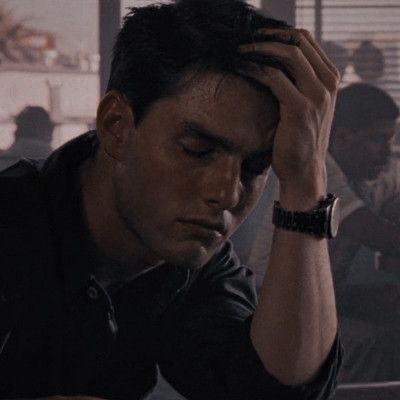
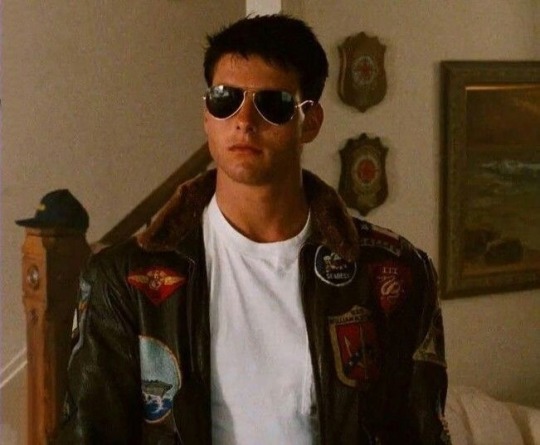
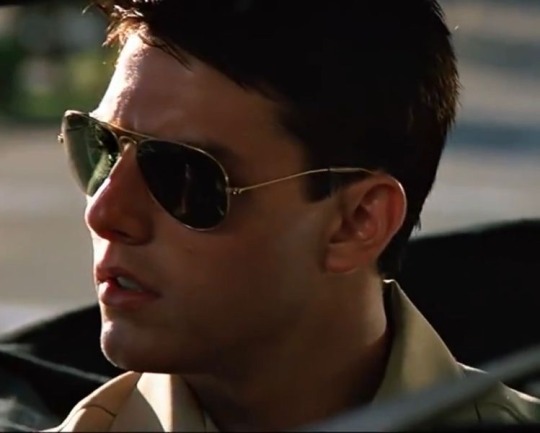


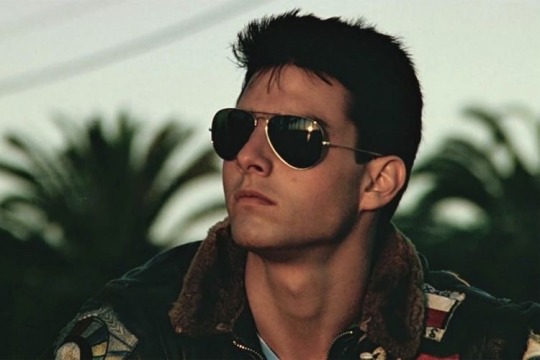
Young Maverick
thanks to reading @lovelybucky1 drabbles / fics the way they described young Maverick in every fic is just *chefs kiss* 😚🤌✨ please do more 🫣
#dont get all crazy on me for jumping into the bandwagon late#i had issues#im attracted more to older guys as in Tom Cruise#but younger him is fineeeeee#tom cruise#tom cruise maverick#maverick#top gun 1986#young maverick#young tom cruise
82 notes
·
View notes
Text
A bit depressing to see ppl my age graduating while I'm going into senior in my 18
5 notes
·
View notes
Note
my dad is somethin else

HA
i kinda like him he’s funny
#my dear father#best dad#just don’t mind when 16 year old me would roast and toast and flip tf outta ur dad when he would do smth#jus shhhhhhhh#i had issues
4 notes
·
View notes
Text
found my two old diaries from like 2011-2020, all i gotta say is…wow…depression™️
1 note
·
View note
Text
Are you normal or when you were bored in classes you used to take your scissors and look at your individual hair strands looking for split ends and cutting them?
2 notes
·
View notes
Text
keep seeing undergrads on social media saying “oh if a prof has a strict no-AI academic integrity policy that’s a red flag for me because that means they don’t know how to design assignments” like sorry girl but that just sounds like you’ve got a case of sour grapes about not being allowed to cheat with the plagiarism machine that doesn’t know how to evaluate sources and kills the environment! I have a strict no-AI policy because if you use AI to write your essays for a writing course it’s literally plagiarism because you didn’t write it and you’re not learning any of the things the course teaches if you just plug a prompt into the plagiarism generator that kills the environment, hope this helps!
#so many people on the internet like ‘why do I have to write my work myself why can’t I just plug it into the cheating machine’#‘why is it plagiarism to not write my own work and instead use the plagiarism machine built from scraping others’ work without consent?’#like. it is because you are not learning anything if you do not actually do the work assigned to you. hope this helps#I personally have not had AI issues because of how I structure my assignments#but it was a HUGE problem in my department last year. so we all have no-AI to write your classwork policies
26K notes
·
View notes
Text

peruere and clervie
#my art#genshin impact#arlecchino#doomed yuri what if i krill myself#she had sm mommy issues she became father.....
12K notes
·
View notes
Text
Things I've seen tumblr memeing about James Somerton doing à la "How did no one see how bigoted he was!" as if those things haven't been a significant part of tumblr culture for over a decade :
Presenting untrue and bordering on conspiratorial versions of (queer or otherwise marginalised) history without any sources
Completely disregarding and disrespecting any expertise on socio-cultural topics/humanities and distrusting academics and historians (incl. acting as if no academics or historians could be queer or marginalised)
Downplaying the role misogyny played in the historical oppression of queer women and concluding that queer men must have been more oppressed than queer women
Bi women are, at best, not as queer as "real" queer ppl, and at worst, simply equivalent to straight women
Despite nominal trans inclusivity, transmasculine ppl are functionally women when convenient (combined with the above, bi transmascs are functionally straight women)
Despite nominal trans inclusivity (bis), shamelessly attacking, threatening and actively endangering any trans woman who questions them or smth they find important (often by unfairly presenting her as violent or as a threat)
Having absolutely fucking wild and reductive takes about ace ppl, the oppression they face and their place in the queer community
Stating that marriage equality is an assimilationist fight while completely ignoring its direct roots in the horrifying consequences of the AIDS crisis for partners of ppl who died of AIDS
Praising western media creators from the past for queer coding even under censure and in the same breath condemning current non western media creators for being homophobic bc their representation isn't explicit enough
Blaming China for all existing homophobic censoring in western media
Assuming all queer media would be better told by western creators and by western standards
Only out queer ppl get to tell queer stories
Heavily criticising almost all queer media created by women or ppl they see as such (see above points about trans ppl) or involving/starring a significant amount of women for any perceived or real amount of "problematicness", but fawning over and praising and negating criticism of queer media created by and starring mostly or even functionally exclusively men (even when it could be argued that, you know, not involving/seriously sidelining women is a pretty clear example of misogyny which should probably be considered "problematic")
And I'm probably forgetting stuff or there's stuff I have internalised myself and don't recognise as an issue
Like idk but I feel like the takeaway from Hbomberguy and Toddintheshadow's videos should maybe be "be aware of such patterns in your communities bc they definitely exist" and not "this guy is uniquely awful" and I feel like a lot of the discussion I've seen surrounding this has been severely failing at that. Most ppl who've spent any significant amount of time on tumblr prob either have internalised at least one of those thought patterns, have had to de-internalise them, or have had to be extremely vigilant to not internalise them (which is done by, you know, seeking out other sources, which also seemed like an important takeaway from the videos)
#Also I'm saying this as someone who actually watched quite a few of Somerton's videos#And noticed those patterns and stopped watching bc I recognised them from here#and had already learned to unlearn them after being so exposed to them here#And tbh I think anyone who hasn't had the luck or made the conscious choice to seek out ppl who pushed against those narratives#Would absolutely have fallen for this man's bullshit. Like let's not kid ourselves we see takes like this every day on this hellsite#2014 me would have. For sure.#This is next to the plagiarism issue which as Harris points out is an Internet wide issue and this includes tumblr#James Somerton#hbomberguy#todd in the shadows#This brought to you by a conversation with my wife yesterday#So many ppl on here don't deserve to meme or be this self absolvingly critical of this man#The call is coming from inside the house#The man has a tumblr it would legit not surprise me if some of the things he supposedly made up himself he did actually get from somewhere#And that somewhere was a tumblr post
16K notes
·
View notes
Text
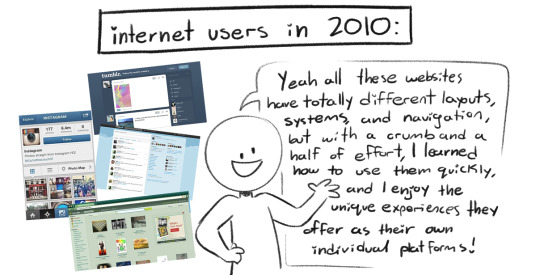
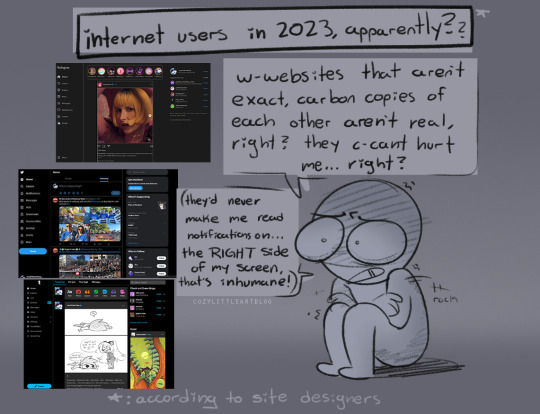
@staff if you [change] the [design] of the fucking [dashboard] i will kill you
edit. i want it on the actual post that i am not actually making a de-th threat against the staff. that's shitty. the caption quotes the fucking costco hot dog meme, which i originally said in the tags. if any staff member sees this please do Not take it personally

#dashboard#staff#tumblr update#comic#art#doodles#costco ceo about the price of a hot dog.png#i refuse to believe this is a real problem that site owners think people have#frankly i refuse to believe people had this issue with deviantart before eclipse#i am sorry you have to put about 15 minutes of effort into understanding a new website. feel better soon#my main blog doesn't have it yet but i logged into here to make this post and. i have it#this is fucking terrible. it would ahve been really really funny for april fools day but not as a permanent change#i hate it a Lot. i hate it so fucking much. oh . my god.#edit - guys i amnot actually sending de*th threats to staff it's the costco hot dog meme
28K notes
·
View notes
Text
What does life in North Korea look like outside of Pyongyang? 🇰🇵
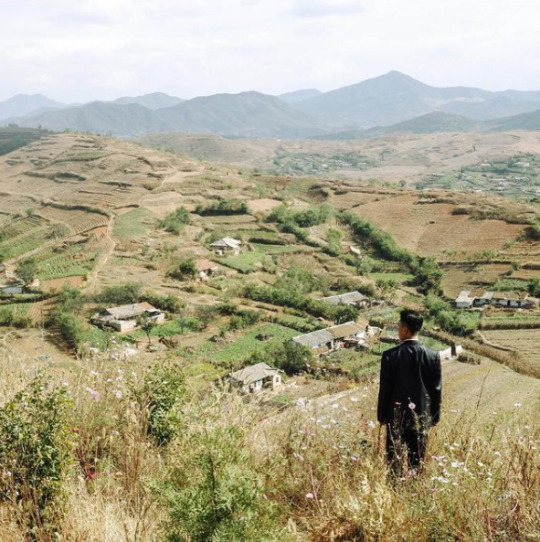
Hey, I'm back again with a very scary "tankie" post that asks you to think of North Koreans as people, and to consider their country not as a cartoonish dystopia, but as a nation that, like any other place on earth, has culture, traditions, and history.
Below is a collection of pictures from various cities and places in North Korea, along with a brief dive into some of the historical events that informs life in the so-called "hermit kingdom."
Warning: very long post
Kaesong, the historic city
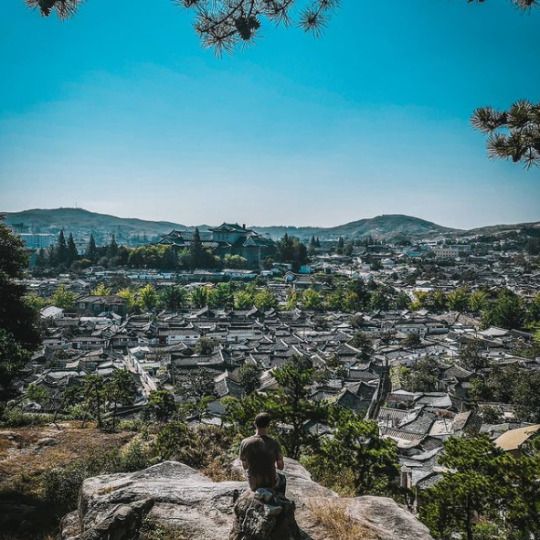
Beginning this post with Kaesong, one of the oldest cities in Korea. It's also one of the few major cities in the DPRK (i.e. "North Korea") that was not completely destroyed during the Korean war.
Every single city you'll see from this point on were victims of intense aerial bombardments from the U.S. and its allies, and had to be either partially or completely rebuilt after the war.
From 1951 to 1953, during what has now become known as the "forgotten war" in the West, the U.S. dropped 635,000 tons of bombs over Korea — most of it in the North, and on civilian population centers. An additional 32,000 tons of napalm was also deployed, engulfing whole cities in fire and inflicting people with horrific burns:
For such a simple thing to make, napalm had horrific human consequences. A bit of liquid fire, a sort of jellied gasoline, napalm clung to human skin on contact and melted off the flesh. Witnesses to napalm's impact described eyelids so burned they could not be shut and flesh that looked like "swollen, raw meat." - PBS
Ever wondered why North Koreans seem to hate the U.S so much? Well...
Keep in mind that only a few years prior to this, the U.S. had, as the first and only country in the world, used the atomic bomb as a weapon of war. Consider, too, the proximity between Japan and Korea — both geographically and as an "Other" in the Western imagination.
As the war dragged on, and it became clear the U.S. and its allies would not "win" in any conventional sense, the fear that the U.S. would resort to nuclear weapons again loomed large, adding another frightening dimension to the war that can probably go a long way in explaining the DPRK's later obsession with acquiring their own nuclear bomb.
But even without the use of nuclear weapons, the indiscriminate attack on civilians, particularly from U.S. saturation bombings, was still horrific:
"The number of Korean dead, injured or missing by war’s end approached three million, ten percent of the overall population. The majority of those killed were in the North, which had half of the population of the South; although the DPRK does not have official figures, possibly twelve to fifteen percent of the population was killed in the war, a figure close to or surpassing the proportion of Soviet citizens killed in World War II" - Charles K. Armstrong
On top of the loss of life, there's also the material damage. By the end of the war, the U.S. Air Force had, by its own estimations, destroyed somewhere around 85% of all buildings in the DPRK, leaving most cities in complete ruin. There are even stories of U.S. bombers dropping their loads into the ocean because they couldn't find any visible targets to bomb.
What you'll see below of Kaesong, then, provides both a rare glimpse of what life in North Korea looked like before the war, and a reminder of what was destroyed.

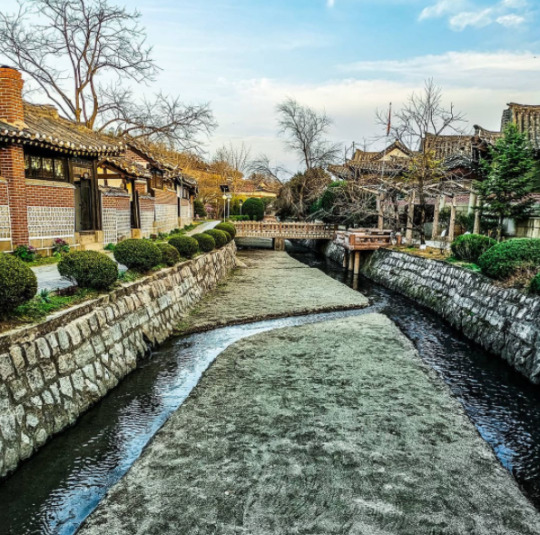

Kaesong's main street, pictured below.
Due the stifling sanctions imposed on the DPRK—which has, in various forms and intensities, been in effect since the 1950s—car ownership is still low throughout the country, with most people getting around either by walking or biking, or by bus or train for longer distances.
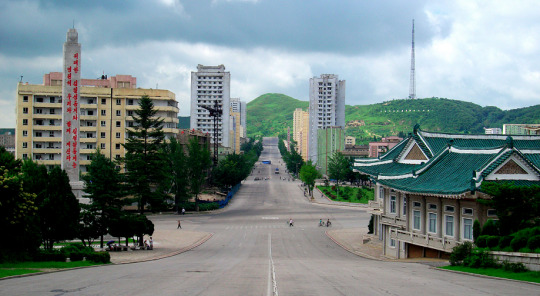
Kaesong, which is regarded as an educational center, is also notable for its many Koryŏ-era monuments. A group of twelve such sites were granted UNESCO world heritage status in 2013.
Included is the Hyonjongnung Royal Tomb, a 14th-century mausoleum located just outside the city of Kaesong.
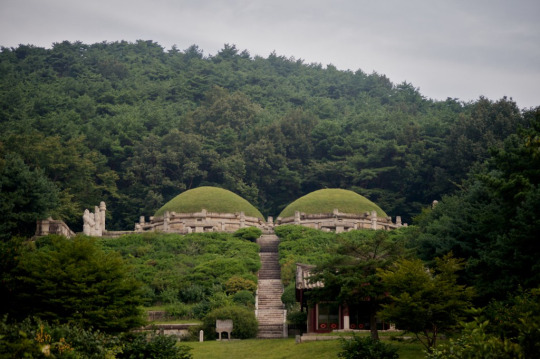
One of the statues guarding the tomb.
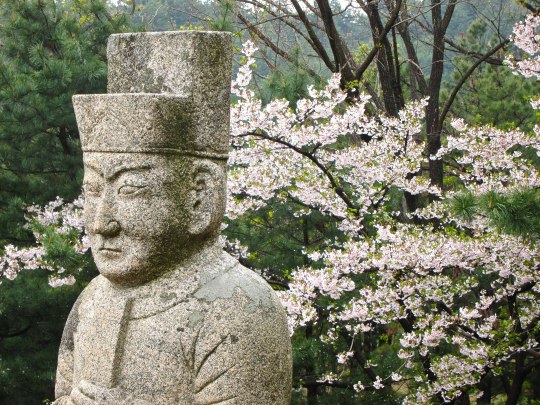
Before moving on the other cities, I also wanted to showcase one more of the DPRK's historical sites: Pohyonsa, a thousand-year-old Buddhist temple complex located in the Myohyang Mountains.

Like many of DPRK's historic sites, the temple complex suffered extensive damage during the Korean war, with the U.S. led bombings destroying over half of its 24 pre-war buildings.
The complex has since been restored and is in use today both as a residence for Buddhist monks, and as a historic site open to visitors.


Hamhung, the second largest city in the DPRK.
A coastal city located in the South Hamgyŏng Province. It has long served as a major industrial hub in the DPRK, and has one of the largest and busiest ports in the country.
Hamhung, like most of the coastal cities in the DPRK, was hit particularly hard during the war. Through relentless aerial bombardments, the US and its allies destroyed somewhere around 80-90% percent of all buildings, roads, and other infrastructure in the city.
Now, more than seventy years later, unexploded bombs, mortars and pieces of live ammunition are still being unearthed by the thousands in the area. As recently as 2016, one of North Korea's bomb squads—there's one in every province, faced with the same cleanup task—retrieved 370 unexploded mortar rounds... from an elementary school playground.
Experts in the DPRK estimate it will probably take over a hundred years to clean up all the unexploded ordnance—and that's just in and around Hamhung.
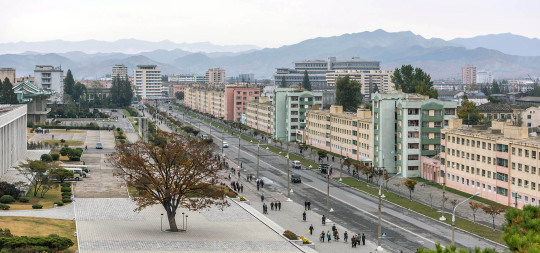

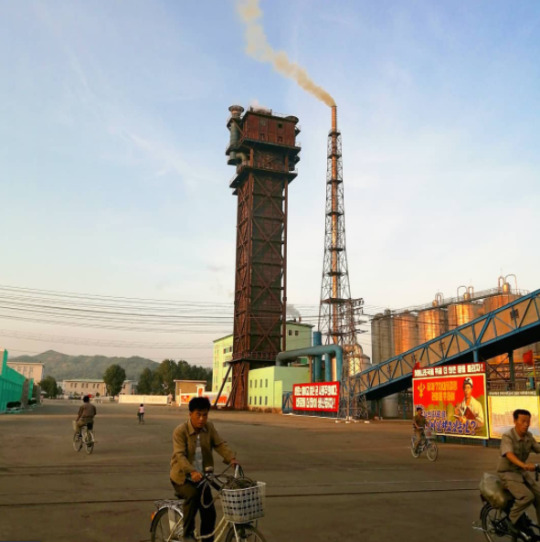
Hamhung's fertilizer plant, the biggest in North Korea.
When the war broke out, Hamhung was home to the largest nitrogen fertilizer plant in Asia. Since its product could be used in the creation of explosives, the existence of the plant is considered to have made Hamhung a target for U.S. aggression (though it's worth repeating that the U.S. carried out saturation bombings of most population centers in the country, irrespective of any so-called 'military value').
The plant was immediately rebuilt after the war, and—beyond its practical use—serves now as a monument of resistance to U.S. imperialism, and as a functional and symbolic site of self-reliance.
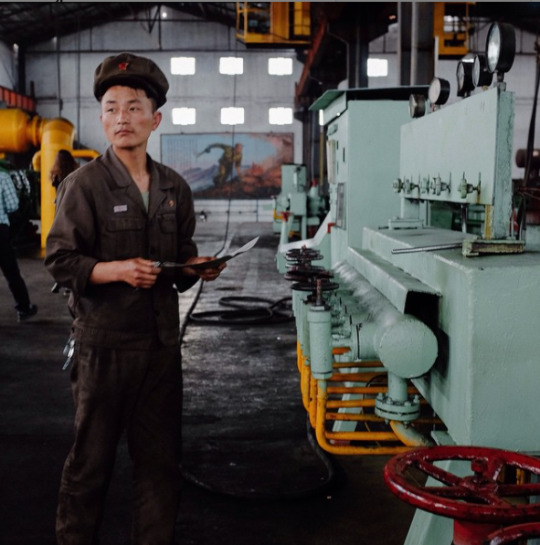
Chongjin, the third largest city in the DPRK.
Another coastal city and industrial hub. It underwent a massive development prior to the Korean war, housing around 300,000 people by the time the war broke out.
By 1953, the U.S. had destroyed most of Chongjin's industry, bombed its harbors, and killed one third of the population.
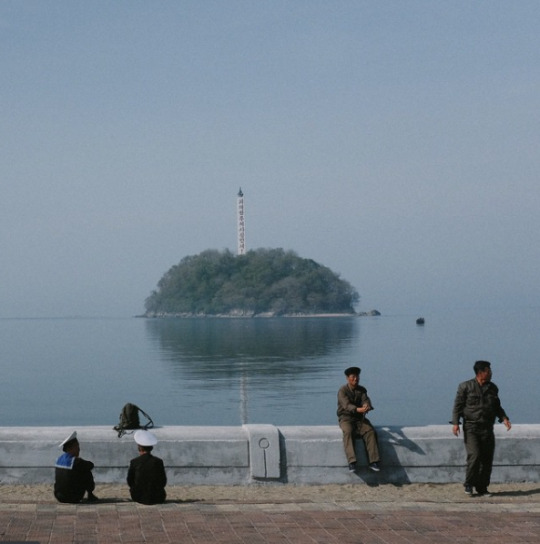
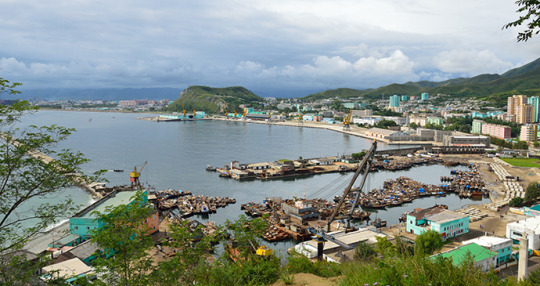

Wonsan, a rebuilt seaside city.
The city of Wonsan is a vital link between the DPRK's east and west coasts, and acts today as both a popular holiday destination for North Koreans, and as a central location for the country's growing tourism industry.
Considered a strategically important location during the war, Wonsan is notable for having endured one of the longest naval blockades in modern history, lasting a total of 861 days.
By the end of the war, the U.S. estimated that they had destroyed around 80% of the city.
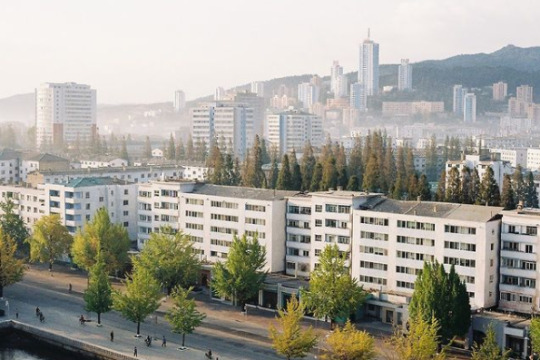

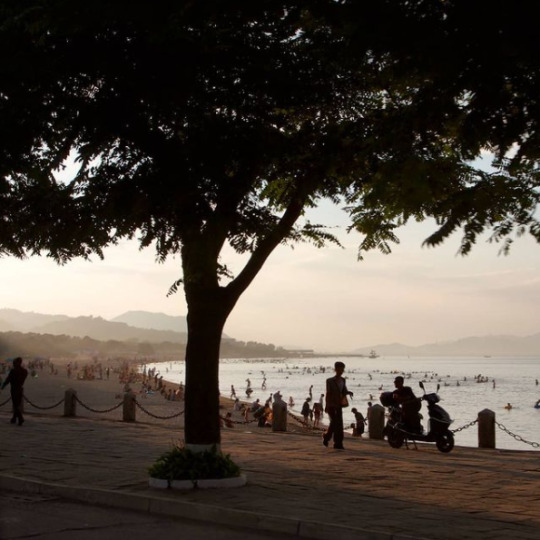

Masikryong Ski Resort, located close to Wonsan. It opened to the public in 2014 and is the first, I believe, that was built with foreign tourists in mind.
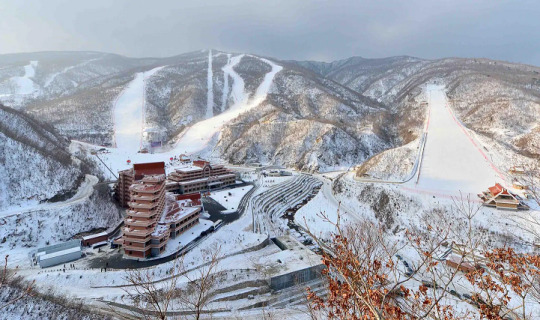
Sariwon, another rebuilt city
One of the worst hit cities during the Korean War, with an estimated destruction level of 95%.
I've written about its Wikipedia page here before, which used to mockingly describe its 'folk customs street'—a project built to preserve old Korean traditions and customs—as an "inaccurate romanticized recreation of an ancient Korean street."
No mention, of course, of the destruction caused by the US-led aerial bombings, or any historical context at all that could possibly even hint at why the preservation of old traditions might be particularly important for the city.
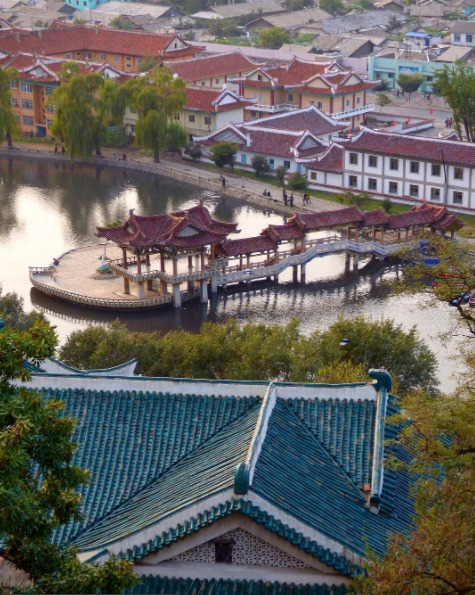

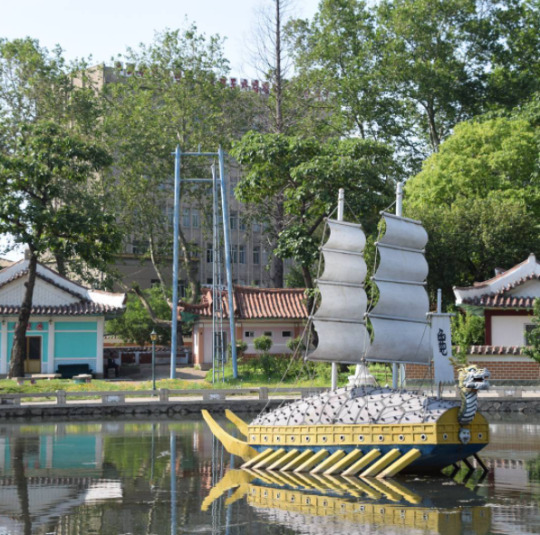
Life outside of the towns and cities
In the rural parts of the DPRK, life primarily revolves around agriculture. As the sanctions they're under make it difficult to acquire fuel, farming in the DPRK relies heavily on manual labour, which again, to avoid food shortages, requires that a large portion of the labour force resides in the countryside.
Unlike what many may think, the reliance on manual labour in farming is a relatively "new" development. Up until the crisis of the 1990s, the DPRK was a highly industrialized nation, with a modernized agricultural system and a high urbanization rate. But, as the access to cheap fuel from the USSR and China disappeared, and the sanctions placed upon them by Western nations heavily restricted their ability to import fuel from other sources, having a fuel-dependent agricultural industry became a recipe for disaster, and required an immediate and brutal restructuring.
For a more detailed breakdown of what lead to the crisis in the 90s, and how it reshaped the DPRKs approach to agriculture, check out this article by Zhun Xu.

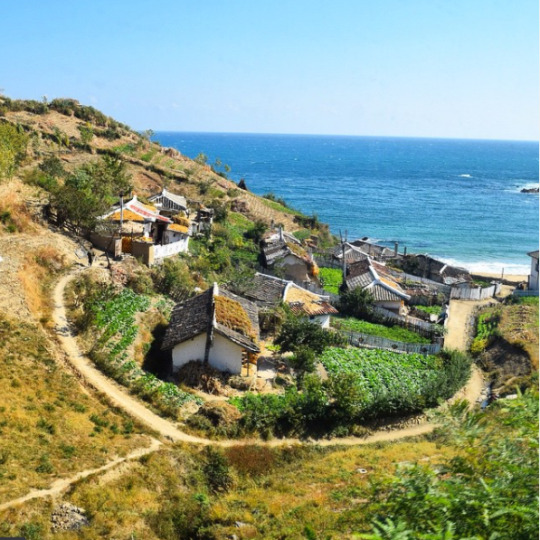
Some typical newly built rural housing, surrounded by farmland.
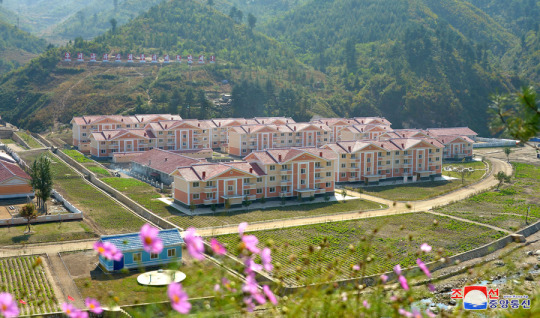
Tumblr only allows 20 pictures per post, but if you want to see more pictures of life outside Pyongyang, check out this imgur album.
#dprk#north korea#i've had this post unfinished in drafts for almost a year#also sorry about the spelling and potential formatting issues it's a nightmare to edit at this point#it was literally just meant to be a collection of picture and then the writing just sort of happened#enjoy the brief heritageposts history lesson i guess
5K notes
·
View notes
Text

Ladies, gentlemen, gentleladies, men and others here!
Introducing you…
✨ A B B Y ✨
#fanart#art#mike schmidt#abby schmidt#fnaf#fnaf movie#five nights at freddy's#I tried to do a speech bubble look like a sticker#to give it that playfull old look#I like how.. MIKE LOOKS LIKE HIMSELF#with abby I had issues#I hope to learn to draw her properly#buoryok art
10K notes
·
View notes
Text
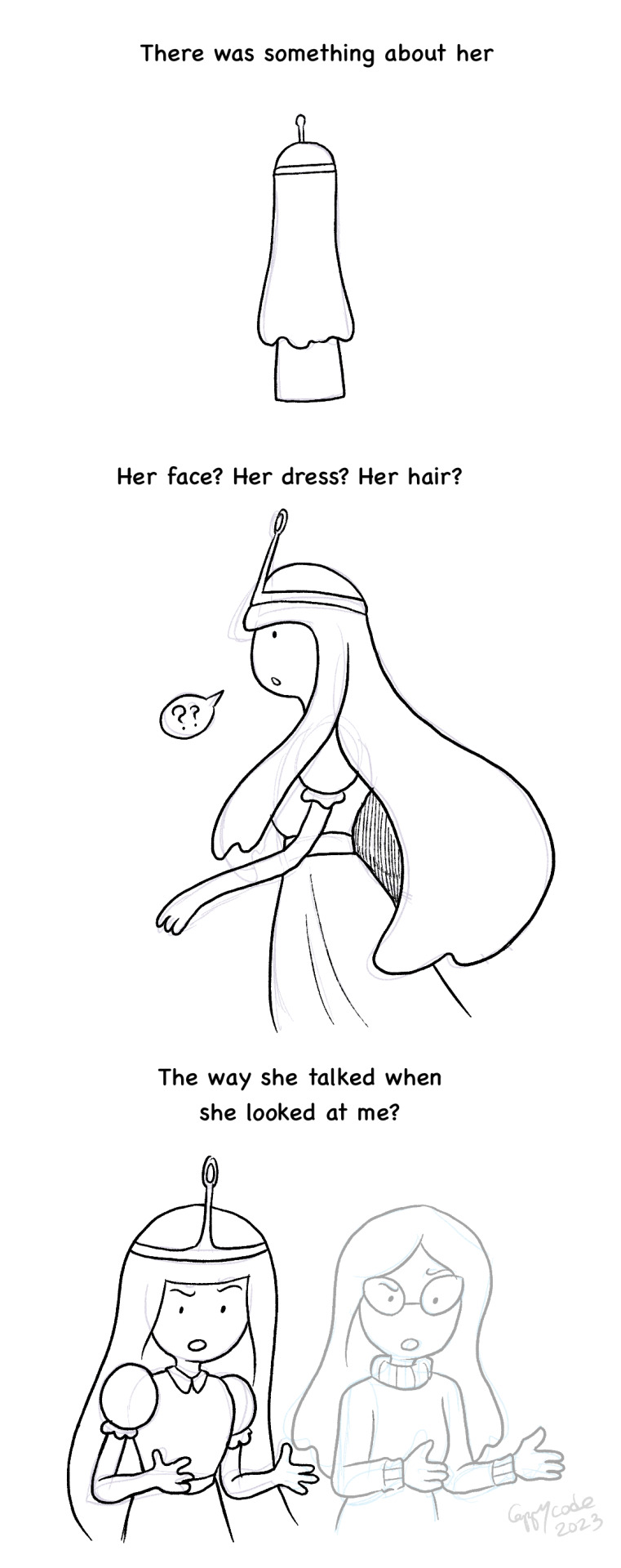


"The dead one! Yeah I haven't thought about her in a long time!"
A little theory I've had about Winter King's original motives based on his heartless comment about Betty and Ice King's original motives for kidnapping princesses in the first place...... clearly she gave off Bad Ex Vibes…
#adventure time#fionna and cake#simon petrikov#winter king#candy queen#princess bubblegum#ice king#betty grof#fionna and cake spoilers#adventure time spoilers#at spoilers#spoilers#fan art#digital art#sketch#2023#SORRY THIS IS SKETCHY I NEEDED TO GET IT OUT OF MY SYSTEM. I HAVE SO MANY THOUGHTS ABOUT THIS JERKWAD#SO MANY QUESTIONS SO MANY THOUGHTS AND NONE OF THEM WILL EVER BE ANSWERED LOL#I say bad-ex in quotes I feel like I hc that this Simon definitely had some ego issues to begin with...#and whether betty left him or died in the apocalypse he held that against her and became resentful instead#after he became Winter King he grew out of it and stopped caring because he's having a fantastic time now#but PB has always been a subconscious reminder of Betty. Why else would he target her specifically.
17K notes
·
View notes
Text

In my mind palace my tav and Astarion are playing the exact same game of 5D chess and they don't realize it yet
#baldur's gate 3#bg3#astarion#bg3 tav#my art#gabby plays bg3#shadowheart#and#lae'zel#are also here#anyway tag ramble time just got the romance scene where you can hug him and on my knees.....this guy.....#astarion: hey i was kinda sleeping with you to save my ass but turns out im feeling real emotions now#matt marja: wtf. me too. this is so embarrassing for both of us we're idiots [tenderly hold hands]#i thought up matt for a campaign we may or may not play last year and deciding to play him in bg3 because i thought it would be funny#to put him against this guy who seemingly has many of his same issues. Best idea i've ever had. the emotional catharsis im experiencing#matt marja
12K notes
·
View notes
Text

8K notes
·
View notes
Text
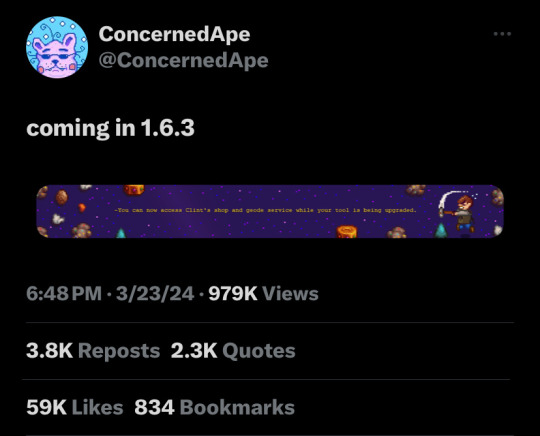

THANK YOU GOD-APE
6K notes
·
View notes
Note
If only Machete wasn't so distinctly white and waifish. Otherwise one could possibly use a lookalike to fake his death and just run away with vasco. But finding someone that resembles machete would be almost as hard as making the choice to end a life to save your own.
.
#🤔#I've never faked my death so I wouldn't know#but wouldn't ensuring that the body isn't 100% identifiable be the first step in tackling that issue#make it seem that it's most likely you but no one can tell for sure#it's not like they had dental records and dna testing in the late 1500's#sorry this got a little morbid I just started to think about the logistics#answered#anonymous#that isn't a bad idea actually#they aren't going to come after him later if they think he's dead
3K notes
·
View notes